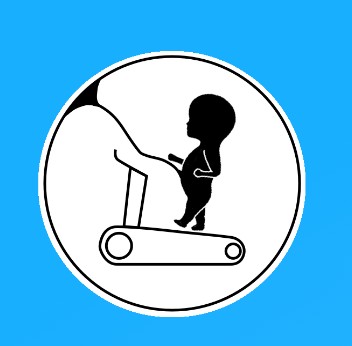
Principles of Physiological Interpretation of CTG
Physiological Interpretation of CTG was first implemented in London in 2006 based on the application of the principles of physiological responses of human fetuses to intrapartum hypoxic and mechanical stresses [33-37]. Currently, in addition to approximately 20 Maternity units in the UK and approximately 20% of maternity units in Spain, maternity hospitals several other countries, including France, Oman, Australia, China, Denmark, Poland, Estonia and Ireland have implemented Physiological Interpretation of CTG.
Research Evidence
In addition to several experimental animal studies which have demonstrated physiological responses of mammalian fetuses to hypoxic stress, there has been an evolution of scientific evidence to support the use of Physiological Interpretation of CTG in clinical practice [38-55].
To learn more about go to: https://physiological-ctg.com/guideline.html
References
33. Chandraharan E, Arulkumaran S. Prevention of birth asphyxia: responding appropriately to cardiotocograph (CTG) traces. Best Pract Res Clin Obstet Gynaecol 2007; 21: 609–624.
34. McDonnell S, Chandraharan E, The Pathophysiology of CTGs and Types of Intrapartum Hypoxia, Current Women`s Health Reviews 2013; 9(3)
35. Pereira S, Chandraharan E. Recognition of chronic hypoxia and pre-existing foetal injury on the cardiotocograph (CTG): Urgent need to think beyond the guidelines.Porto Biomed J 2017; 2: 124–9.
36. Chandraharan E. Handbook of CTG Interpretation: From Patterns to Physiology. Cambridge: Cambridge University Press, 2017.
37. Oikonomou M, Chandraharan E. Fetal heart rate monitoring in labor: from pattern recognition to fetal physiology. Minerva Obstet Gynecol. 2021 Feb;73(1):19-33. doi: 10.23736/S0026-4784.20.04666-3.
38. Jia YJ, Chen X, Cui HY, et al. Physiological CTG interpretation: the significance of baseline fetal heart rate changes after the onset of decelerations and associated perinatal outcomes. The Journal of Maternal-Fetal & Neonatal Medicine, 2021. 34(14): 2349-2354.
39. Gracia-Perez-Bonfils A, Vigneswaran K, Cuadras D, Chandraharan E. Does the saltatory pattern on cardiotocograph (CTG) trace really exist? The ZigZag pattern as an alternative definition and its correlation with perinatal outcomes. J Matern Fetal Neonatal Med. 2019 Nov 13:1-9.
40. Albertson A, Amer-Wåhlin I, Lowe V, Archer A, Chandraharan E. Incidence of subacute hypoxia during active maternal pushing during labour. Book of Abstracts. World Congress of the Royal College of Obstetricians and Gynaecologists (RCOG) 2016.
41. Pereira S, Lau K, Modestini C, Wertheim D, Chandraharan E. Absence of fetal heart rate cycling on the intrapartum cardiotocograph (CTG) is associated with intrapartum pyrexia and lower Apgar scores. J Matern Fetal Neonatal Med. 2021 Jun 22:1-6. doi: 10.1080/14767058.2021.1940130.
42. Sukumaran S, Pereira V, Mallur S, Chandraharan E. Cardiotocograph (CTG) changes and maternal and neonatal outcomes in chorioamnionitis and/or funisitis confirmed on histopathology. Eur J Obstet Gynecol Reprod Biol. 2021 May;260:183-188. doi: 10.1016/j.ejogrb.2021.03.029. Epub 2021 Mar 30.
43. Galli L, Dall’Asta A, Whelehan V, Archer A, Chandraharan E. Intrapartum cardiotocography patterns observed in suspected clinical and subclinical chorioamnionitis in term fetuses. J Obstet Gynaecol Res. 2019 Dec;45(12):2343-2350. doi: 10.1111/jog.14133. Epub 2019 Oct 16.
44. Albertson A, Amer-Wåhlin I, Lowe V, Archer A, Chandraharan E. Association of fetal ECG changes with the subacute hypoxic pattern on the CTG trace during active second stage of labour. Book of Abstracts. World Congress of the Royal College of Obstetricians and Gynaecologists (RCOG) 2016.
45. di Pasquo E, Commare A, Masturzo B, Paolucci S, Cromi A, Montersino B, Germano CM, Attini R, Perrone S, Pisani F, Dall’Asta A, Fieni S, Frusca T, Ghi T. Short-term morbidity and types of intrapartum hypoxia in the newborn with metabolic acidaemia: a retrospective cohort study. BJOG. 2022 Mar 3. doi: 10.1111/1471-0528.17133
46. Chandraharan E, Evans SA, Krueger D, Pereira S, Skivens S, et al. (2018) Physiological CTG interpretation. Intrapartum Fetal Monitoring Guideline. Physiological CTG – Guideline https://physiological-ctg.com/guideline.html
47. Zhu LA, Blanc J, Heckenroth H, Peyronel C, Graesslin B, Marcot M, Tardieu S, Bretelle F. Fetal physiology cardiotocography training, a regional evaluation. J Gynecol Obstet Hum Reprod. 2021 Jun;50(6):102039.
48. Ingram C, Gupta N, Mustafa S, Singh M, Chandraharan E. Impact of Physiological CTG Guidelines on Intrapartum Hypoxic injuries and brain cooling. World Congress of the Royal College of Obstetricians and Gynaecologists (RCOG) 2021. http://rcog2021.ipostersessions.com/Default.aspx?s=57-10-3E-F2-82-8D-54-57-30-A5-49-D2-05-B5-76-74
https://www.rcog.org.uk/en/guidelines-research-services/audit-quality-improvement/each-baby-counts/information- for-trusts-health-boards/case-studies/lewisham-and-greenwich-nhs-trust/
49. Reeves K, Scully R, Dutta A, Bullen-Bull R, Singh M, Chandraharan E. Training and support on Physiological CTG Interpretation : Does it reduce the hypoxic encephalopathy (HIE) rate? European Congress on Intrapartum Care. 2021
50. HSJ Value National Award in 2016 for saving the NHS by reducing Hypoxic brain injuries https://www.stgeorges.nhs.uk/newsitem/st-georges-fetal-monitoring-team-wins-national-award/
51. BMA Clinical Leadership National Award in 2017 for esnuring low HIE rate and low intrapartum emergency caesarean section rate by implementing physiological interpretation of CTG. https://s24098.pcdn.co/wp-content/uploads/2017/09/Awards_brochure_2017_final.pdf
52. HSJ Improving Outcomes National Award. Reduction of intrapartum hypoxic injuries following the Introduction of Physiological Interpetation of CTG. https://www.hsj.co.uk/the-hsj-awards/hsj-awards-2018-improving-outcomes-through-learning-and-development/7023837.article
53. Zamora Del Pozo C, Chóliz Ezquerro M, Mejía I, Díaz de Terán Martínez-Berganza E, Esteban LM, Rivero Alonso A, Castán Larraz B, Andeyro García M, Savirón Cornudella R. Diagnostic capacity and interobserver variability in FIGO, ACOG, NICE and Chandraharan cardiotocographic guidelines to predict neonatal acidemia. J Matern Fetal Neonatal Med. 2021 Oct 15:1-9.
54. Yatham SS, Whelehan V, Archer A, Chandraharan E. Types of intrapartum hypoxia on the cardiotocograph (CTG): do they have any relationship with the type of brain injury in the MRI scan in term babies?J Obstet Gynaecol 2019; 1–6.
55. Pereira S, Patel R, Zaima A, Tvarozkova K, Chisholm P, Kappelou O, Evanson J, Chandraharan E, Wertheim D, Shah DK. Physiological CTG categorization in types of hypoxia compared with MRI and neurodevelopmental outcome in infants with HIE. J Matern Fetal Neonatal Med. 2022 Mar 13:1-9.